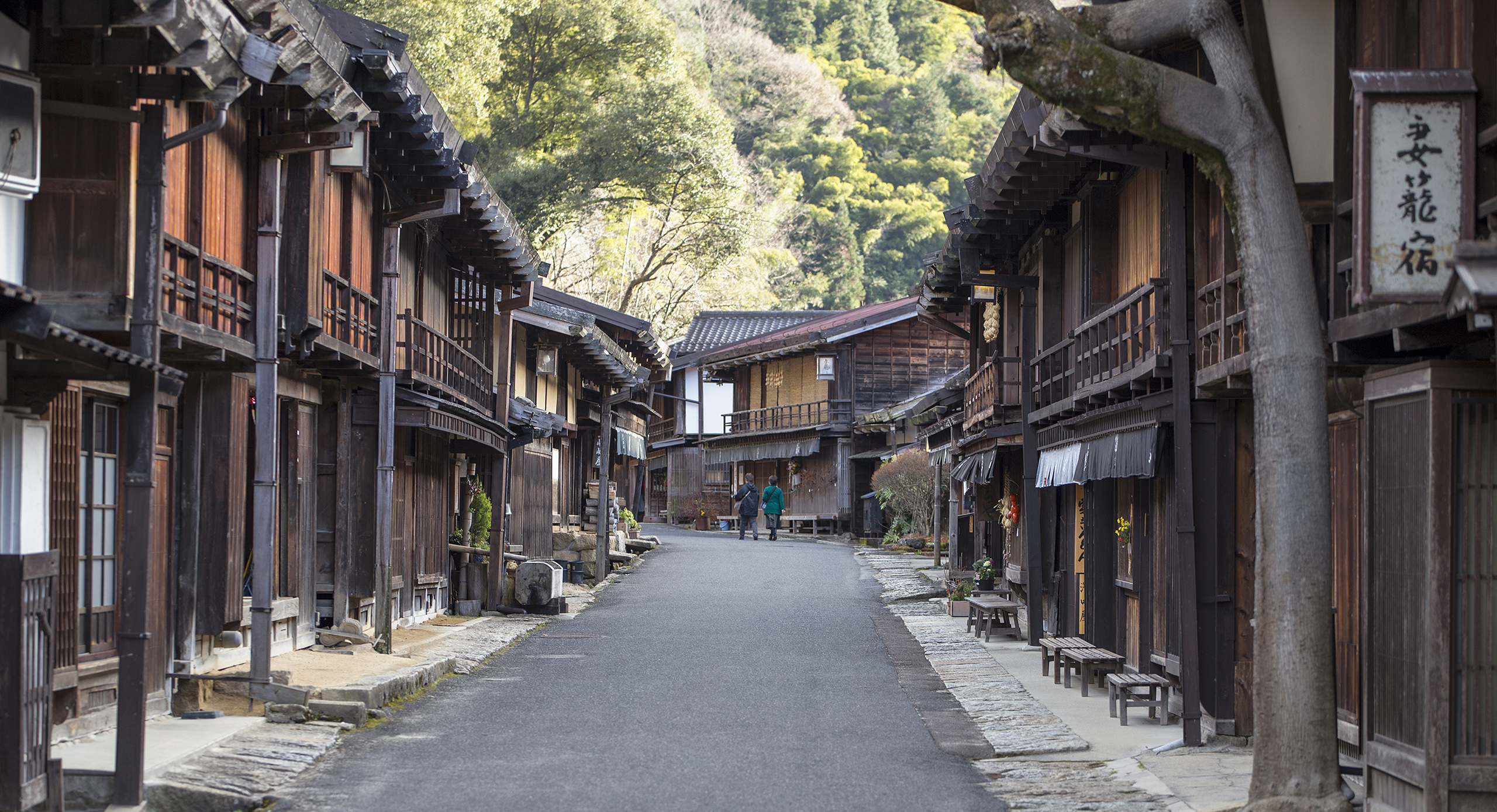
Kiso Valley & Nakasendo
Picture Japan as it was hundreds of years ago: small villages of wooden buildings surrounded by mountains cloaked forest and shrouded in mist; streets filled with little more than foot traffic and the voices of shopkeepers selling their wares. Welcome to the Kiso Valley.
In the Edo period (1603-1867), the towns of Magome and Tsumago were the 42nd and 43rd of 69 staging posts on the Nakasendo, a trade route that connected the city we now call Tokyo with the Imperial court in Kyoto. It was a trail forged by warlords and daimyo at the behest of the ruling shogun, who required all the most important families in the capital to pay their respects to him in Edo. These weary travellers stopped along the way in towns like Magome and Tsumago for a few cups of sake and a respite from the cold, soaking their aching limbs in hot spring baths and swapping stories by the fireside at the local inns.
Between then and now, much has changed in Japan — but not here. Here, rivers of melted snow flow still gently down from the mountains, passing slowly turning waterwheels and rich, green rice paddies on the way. People still sit on their front porches chatting, monks still make their evening rounds collecting alms, and travellers on the Nakasendo Way still gather at traditional inns for home-cooking, hot baths, and friendly camaraderie.
If you’ve come in search of the Japan of woodblock prints, you’ll find it on the winding, cobblestone path between Magome and Tsumago.
